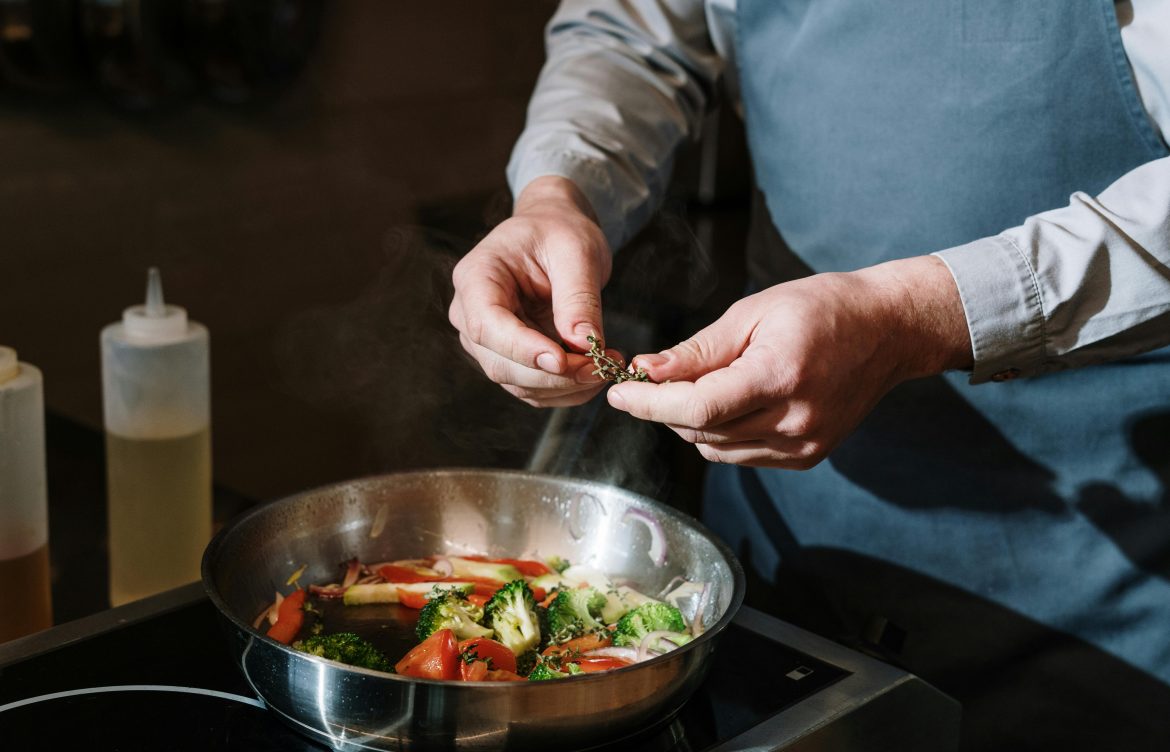
Embracing Zero-Oil Cooking: A Healthier, Flavorful Journey
Welcome to our culinary corner! Today, we’re diving into the wonderful world of zero-oil cooking. You might be wondering, “Can food without oil really taste good?” The answer is a resounding yes! Not only can zero-oil dishes be delicious, but they also come with a host of health benefits.
Let’s explore how you can make this transformative shift in your cooking and why it’s worth it.
The Health Benefits of Zero-Oil Cooking
Heart Health
One of the most significant benefits of eliminating oil from your diet is improved heart health. Oils, especially saturated and trans fats, can contribute to the buildup of cholesterol in the arteries, leading to heart disease. Zero-oil cooking helps reduce this risk, promoting a healthier cardiovascular system.
Weight Management
Oils are calorie-dense, with just one tablespoon containing around 120 calories. By cutting out oil, you can significantly reduce your calorie intake, aiding in weight loss or maintenance. This approach is especially beneficial for those looking to shed a few pounds without compromising on flavor.
Better Digestion
High-fat foods can be tough on the digestive system, leading to discomfort or bloating. Zero-oil meals are generally lighter and easier to digest, improving overall gut health and well-being.
Lower Risk of Chronic Diseases
A diet high in oils, particularly those rich in omega-6 fatty acids, has been linked to inflammation, which is a precursor to many chronic diseases such as diabetes and arthritis. Reducing oil intake can help lower inflammation levels in the body.
Enhanced Nutrient Absorption
Surprisingly, some nutrients are better absorbed without oil. For instance, the fiber in vegetables can bind to fat and prevent the absorption of certain nutrients. Zero-oil cooking ensures you’re getting the maximum benefit from the wholesome ingredients you use.
Tips for Delicious Zero-Oil Cooking
Use Non-Stick Cookware
Investing in high-quality non-stick pans can make a world of difference. They allow you to sauté and fry without the need for oil, making it easier to prepare your favorite dishes the healthy way.
Embrace Steaming and Baking
Steaming vegetables and proteins preserves their natural flavors and nutrients. Baking is another excellent method, especially for creating crispy textures without the need for oil.
Experiment with Seasonings
Herbs, spices, and condiments are your best friends in zero-oil cooking. Garlic, ginger, turmeric, and cumin can add depth and richness to your dishes. Fresh herbs like cilantro, parsley, and basil provide a burst of freshness.
Use Natural Moisture
Many ingredients release their own juices when cooked, which can be used to create a delicious, oil-free sauce. Tomatoes, onions, and mushrooms are perfect examples. You can also use vegetable or chicken broth to add moisture and flavor.
Explore Plant-Based Substitutes
Ingredients like avocado, hummus, or mashed bananas can replace oil in baking, adding moisture and a creamy texture without the extra fat.
A Sample Zero-Oil Recipe: Flavorful Chickpea and Vegetable Stew
Let’s get started with a simple yet mouthwatering zero-oil recipe that’s perfect for any meal.
Ingredients:
- 1 cup dried chickpeas (soaked overnight) or 1 can chickpeas (drained and rinsed)
- 2 cups vegetable broth
- 1 large onion, finely chopped
- 3 garlic cloves, minced
- 2 carrots, diced
- 2 celery stalks, diced
- 1 red bell pepper, chopped
- 1 zucchini, chopped
- 1 can diced tomatoes
- 1 tsp ground cumin
- 1 tsp paprika
- 1 tsp turmeric
- Salt and pepper to taste
- Fresh cilantro for garnish
Instructions:
Sauté Vegetables: In a large non-stick pot, sauté the onions and garlic until they become translucent. Add a splash of vegetable broth if needed to prevent sticking.
Add Spices: Stir in the cumin, paprika, and turmeric, cooking for another minute to release their aromas.
Combine Ingredients: Add the carrots, celery, bell pepper, and zucchini to the pot. Pour in the vegetable broth and diced tomatoes, bringing the mixture to a boil.
Simmer: Reduce the heat and add the chickpeas. Let the stew simmer for about 30 minutes, or until the vegetables are tender and the flavors meld together.
Season and Serve: Season with salt and pepper to taste. Garnish with fresh cilantro before serving.
This chickpea and vegetable stew is a perfect example of how zero-oil cooking can be both nutritious and incredibly satisfying.
Final Thoughts…
Zero-oil cooking is more than just a trend; it’s a sustainable way to enhance your health and enjoy flavorful, vibrant meals. By adopting these techniques and experimenting with your favorite ingredients, you can embark on a culinary journey that’s as delicious as it is beneficial for your body.
So, grab your non-stick pan, stock up on fresh produce, and let’s cook up a storm—oil-free style!